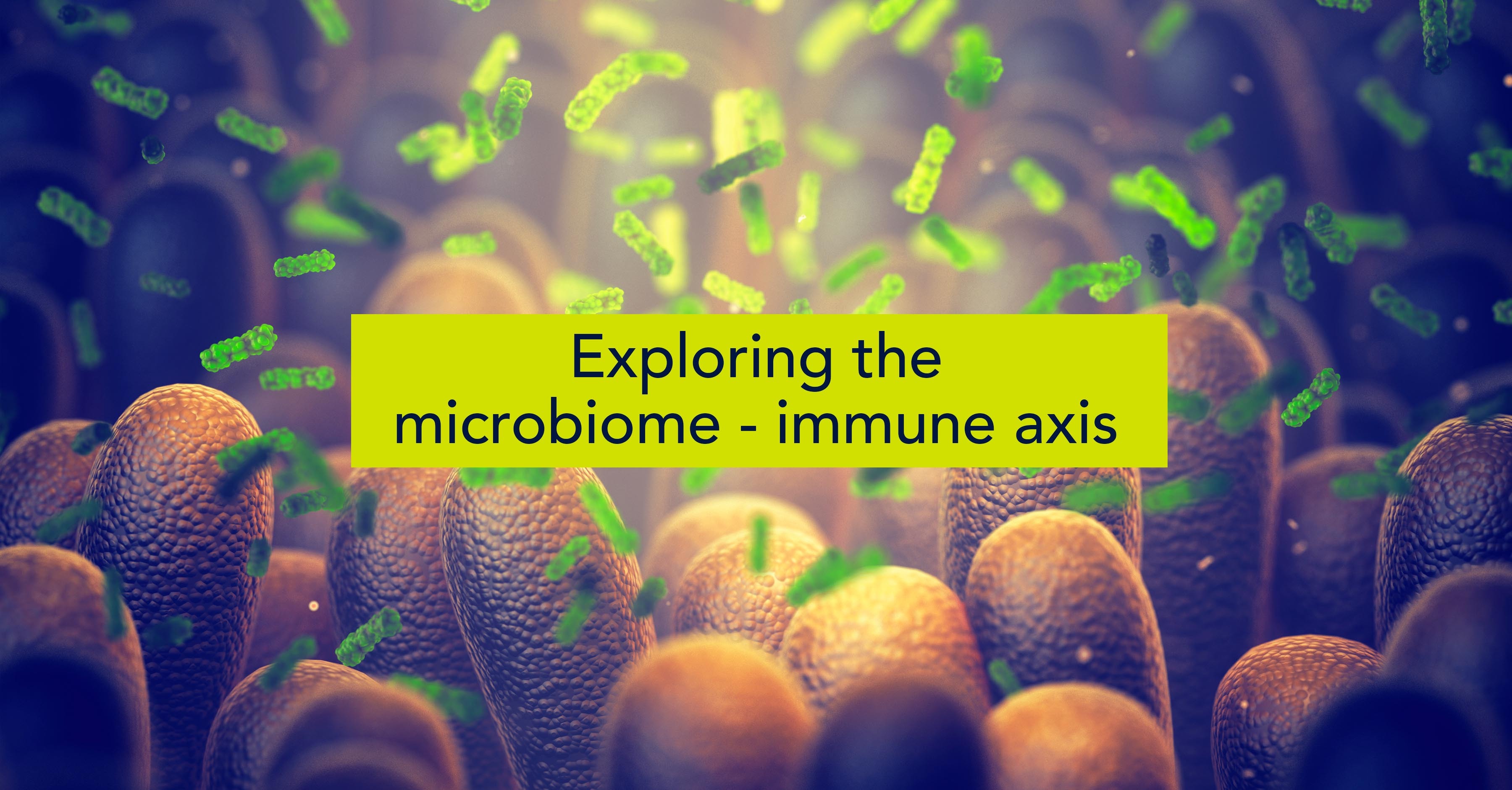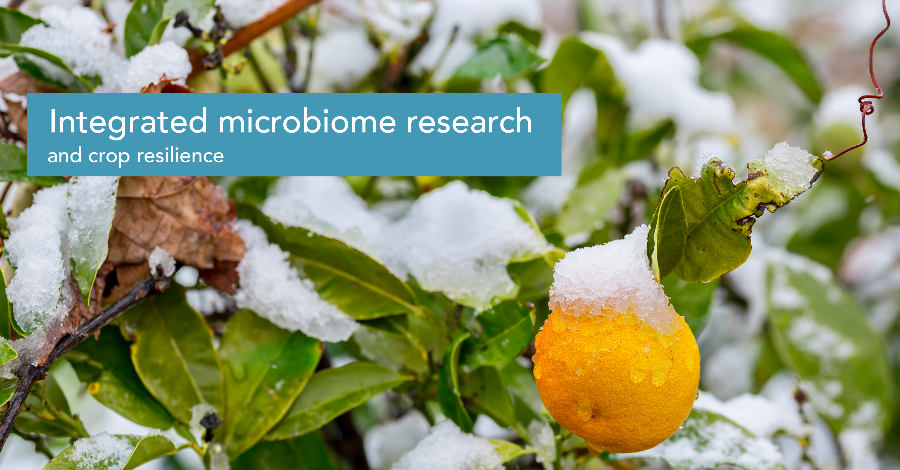Exploring the microbiome-immune axis

Hippocrates was quoted saying ‘all disease starts in the gut’ and almost 2500 years later scientific research begins to appreciate his sentiment. Humans have evolved to live with microbes for millions of years. During this time, microbes have learned to play important roles in the human body. In fact, without the (gut) microbiome it would be very difficult to survive.
Studies are emerging that demonstrate how the microbiota and the microbe-derived metabolites can affect immunotherapy responses. The presence of certain bacteria, viruses and fungi in the microbiome might enhance or weaken its effectiveness. Moreover, inflammatory responses mediated by antibodies can be mitigated by the ‘friendly’ microbes and some microbes have either beneficial or harmful effects on efficacy and safety of immunotherapy. So, it can be very useful to understand the patients' distinct profiles beforehand to predict their therapeutic response.
Once the importance of the gut-microbiota-immune axis has been fully recognized, microbiome-metabolic phenotyping can help to tailor treatments more to the needs of the individual patients, paving the way towards personalized medicine. Are you curious about the role that the trillions of microorganisms in your gut play in your immune system? In this blog post, we will explore why we should consider the microbiome from an immune health perspective and how in silico techniques can be used to analyze the complex and diverse ecosystem of the microbiome. So, let's get started!
Your microbiome fingerprint
On the inner surface of the human gut, there is a very complex group of microorganisms consisting of bacteria, archaea, fungi, parasites, viruses and bacteriophages that interact with each other and the host, called the gut microbiota. A person’s gut has up to 1013 microbial cells with a genetic repertoire estimated to include 232 million genes, expanding the metabolic and regulatory potential of humans enormously. Known gut microbiota span five different phyla: Bacteroidetes, Firmicutes, Proteobacteria, Verrumicrobiota and Actinobacteria of which over 1000 species have been identified. At birth, your gut microbial composition is partially shaped by the maternal vaginal microbiota. From then on, your microbial diversity increases and converges at the age of 3-5 years towards the adult-like microbiota. Once established, the composition remains quite stable but due to environmental factors through life such as nutrition, bacterial infections, geography, medication and other lifestyle-related factors the composition might change and gets its very unique and individual shape, call it a microbiome fingerprint.
The host’s health status and the risk of disease development are closely related to the human microbiome. A healthy, diverse gut microbiota is considered to be symbiotic with the host as it contributes to maintain homeostasis in the host. However, when an imbalance of the gut microbiota occurs, turning into a dysbiotic state, the loss of beneficial microbes allows communities of pathogenic bacteria to expand. As a consequence, the host health status might be influenced through many ways such as altered mechanisms including energy absorption, choline, short-chain fatty and bile acids production or even the gut-brain axis mechanisms. All of this might trigger the development of many diseases including neurodegenerative, cardiovascular, metabolic, auto-immune and gastro-intestinal diseases. The mechanism by which gut microbiota affect human health and disease is not yet completely understood, but recent studies are bringing a wealth of research to foster gut-microbiome based interventions to modulate the gut ecology and consequently also humans' health.
Microbial compositional and functional information is relevant for precision therapeutics. The efficiency of antibody therapy might partially rely on the individual’s microbiome fingerprint and its associated metabolic/proteomic profile.
A first line of defense: your gut barrier
Our gut barrier is our first line of defense against foreign invaders. It consists of an epithelial cell layer and an intestinal mucus layer, which is rich in glycoproteins that are degraded by microbiota when deprived of dietary fiber. This mucus layer shields the epithelial cells from microbiota. However, when pathogenic substances like lipopolysaccharides (LPS; outer wall of gram negative bacteria) from the gut enter the bloodstream due to a leaky gut, they can activate our body’s immune system and induce inflammation. Indeed, LPS binds to TLR4 that stimulates the activation of transcription factors and release of pro-inflammatory molecules such as cytokines and interferons. 70% of the body’s lymphoid immune cells are located along the intestinal lining in the gut-associated lymphoid tissue (GALT). Dendritic cells are on guard and sample passing particles. Based on their assessment of the antigens, they can initiate either an inflammatory or anti-inflammatory response. Luckily, our microbiota help with this process and train our GALT immune cells to tolerate commensal bacteria, and thereby preventing unnecessary inflammation. This immune maturation starts at an early age, but as our microbiome gains in diversity, our immune cells become better at distinguishing harmful and harmless bacteria.
Further, microbial metabolites like short-chain fatty acids (SCFAs) can alleviate the immune system and trigger anti-inflammatory responses. SCFAs are produced when beneficial bacteria ferment non-digestible substrates such as dietary fibers and resistant starch. They can strengthen the gut wall by upregulating the expression of tight-junction proteins, maintaining immune homeostasis. They can interact with immune cells such as regulatory T-cells by binding on their free fatty acid receptors (FFARs) or influence the production of anti-inflammatory cytokines. Other specific products of the gut microbiota are also implicated in human health outcomes, both with beneficial as non-beneficial effects. For example, beneficial metabolites include indole derivatives, tryptophan, vitamins such as K2, B3, B7, B9 and B6; non-beneficial metabolites include secondary bile acids (suggested to have roles in cancer progression) and trimethylamine (implicated in cardiovascular diseases)
You will understand by now that a diverse microbiome is vital to our health, as it helps to train our immune cells and moderate inflammatory responses. An imbalanced microbiome, for example containing pathogenic micro-organisms, can be associated with a leaky gut and an increased risk of disease. The phenotypic variability in disease progression and antibody/immunotherapy outcomes makes it valuable to consider the wide variability in individual’s gut microbiota composition and function. At BioStrand, we strive towards a better understanding of the gut microbiome in human health and disease.
How do we know how our microbiome profile looks like?
I’m sure that you now wonder how scientists can identify and analyze these trillions of microorganisms living in your gut?
Well, several methods exist to interrogate the composition and function of the microbiota. Genomic contents can be detected and subsequently mapped to functional and pathway annotations. For this, feces samples must be sequenced by either amplicon sequencing of the 16S rRNA gene or whole-genome shotgun sequencing (WGS). Whereas WGS allows for a very accurate identification of taxa at species level by using random primers to sequence overlapping regions of a genome, the amplicon sequencing approach is more commonly used due to its cost-effectiveness. The latter method is commonly used to sequence the bacterial 16S rRNA gene across species in diverse metagenomics samples. The 16S rRNA region is amplified by polymerase chain reaction (PCR) with primers that recognize highly conserved regions of the gene and are then sequenced. Usually the analysis of 16s rRNA data starts with resorting to clusters of sequencing reads that differ by less than a fixed dissimilarity threshold. However, recent methodologies have introduced amplicon sequence variants (ASVs) which, resolve single-nucleotide level errors from PCR and sequencing over the sequenced gene region, allowing for high taxonomic resolution. These ASVs are then mapped to taxonomic units using a taxonomic database, such as SILVA, RDP, GreenGenes or NCBI. Generally, the broad genetic contents of each microbe is deduced of what is known about its genome. Therefore, much efforts are invested in expanding this knowledge to establish better quality and more comprehensive genomes.
The characterization of the complex community is one thing (who is there?). To infer how these microbial entities biochemically intercommunicate is a second, and most important thing (what are they doing?). Indeed, we must understand their metabolic behavior as they are linked with essential processes such as digestion, immune system maturation, amino acid synthesis, short-chain fatty acid production, vitamin synthesis and pathogen protection. To gain insight in the metabolic characteristics of microbial communities (rather than single microbes) a systems biology view must be adopted. To this end, genome-scale metabolic models (GEMs) can be built to predict metabolic capacities of bacteria: the AGORA database provides GEMs for 808 different species. These can then be brought together to expand to genome-scale community human metabolic models. Using these in silico models along with host metabolic reconstructions yield mechanistic and potentially personalized insights in the host-microbiome interactions.
In the following blog post, we will delve deeper into the connection between gut microbiota and the efficacy of immunotherapy, exploring amongst others drug-microbiome interactions and how in silico techniques might aid in this context.
Sources:
- https://pubmed.ncbi.nlm.nih.gov/30695998/
- https://www.frontiersin.org/articles/10.3389/fcimb.2021.625913/full
- https://www.ncbi.nlm.nih.gov/pmc/articles/PMC9705255/
- https://jhoonline.biomedcentral.com/articles/10.1186/s13045-022-01273-9
- https://pubmed.ncbi.nlm.nih.gov/26718401/
- https://www.nature.com/articles/ismej2017119
- https://www.sciencedirect.com/science/article/abs/pii/S0010482522007211?via%3Dihub
- https://journals.sagepub.com/doi/full/10.1177/15347354221114100
- https://pubmed.ncbi.nlm.nih.gov/36675320/
- https://microbiomejournal.biomedcentral.com/articles/10.1186/s40168-017-0271-9
- https://www.sciencedirect.com/science/article/pii/S1535610815004316
Subscribe to our blog:






